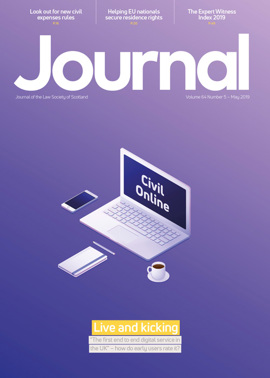Auto-enrolment: keeping employers on their toes

The 6 April 2019 saw the final (at least for now) increase to auto-enrolment minimum contributions – bringing the overall minimum required contribution level to 8% of qualifying earnings, of which at least 3% must come from the employer with the employee making up the shortfall. It remains to be seen how long this level of minimum contribution will persist. It will also be interesting to see the extent to which, if at all, this “final” step up in contributions results in any material member opt-out.
Thus far, the introduction of the automatic enrolment regime has largely been hailed a success, the Pensions Regulator (TPR) recently reporting (based on data submitted by employers) that some 1,477,557 employers confirmed that they had met their duties by completing their declaration of compliance between July 2012 and the end of March 2019. The report also highlighted that 10,054,000 eligible jobholders were enrolled into an auto-enrolment scheme during the same period.
Continuing compliance process
However TPR is at pains to stress that auto-enrolment is a continuing process for employers, and once staff are in a workplace pension scheme employers have ongoing responsibilities to ensure continued compliance. In summary, TPR believes that will generally require employers to:
- assess each payday the age and earnings of staff (who have not been enrolled in a workplace pension scheme), to establish whether they need to be put into one;
- work out each payday the contributions required to be paid;
- continue to make payment to the workplace pension scheme of required contributions;
- write to staff as appropriate to let them know what is happening;
- keep accurate records relating to their workplace pension scheme.
What if you get it wrong?
A case study cited by TPR in connection with its disposal of a breach by a household name employer illustrates the serious financial consequences that can result if employers fail to meet their responsibilities. The case concerned an employer who on its own review discovered that it had failed to pay the minimum contributions required. The employer had written to staff explaining that it would meet the full cost of the unpaid employer contributions (over £350,000), plus additional allowance to compensate members for lost investment returns. TPR was however not satisfied with the employer’s explanation for the oversight or proposed method of rectification, and instead issued a notice to the employer requiring the employer to pay the shortfall of both employer and employee contributions (aggregating over £750,000).
In another reported case, TPR’s sanction of an employer with 12 eligible employees for auto-enrolment, operating a London based café and who had failed to declare as required to TPR auto-enrolment compliance within relevant timescales, illustrates escalation of TPR’s enforcement process (from £400 fixed penalty notice to £5,000 escalating penalty notice and court order). It is even more noteworthy as later the employer’s accountant filed a false declaration of compliance, leading to him being the first adviser to be prosecuted by TPR for providing false or misleading information and fined nearly £7,000.
TPR has also reported exercise of its powers in connection with the actions of directors and senior staff of a recruitment agency – a £200,000 fine for the employer and suspended custodial sentences for directors and senior staff. The claim was brought under the Computer Misuse Act 1990 due to the directors’ actions in encouraging senior staff to contact the pension scheme the National Employment Savings Trust (“NEST”), to obtain information allowing them to access employee NEST accounts and opting those employees out of the pension scheme. NEST was suspicious of the number of calls they received concerning the employer and alerted TPR. Judge Nirmal Shant commented that the actions of the individuals, who all pleaded guilty, “amounted to a deliberate subversion of the automatic enrolment process. It was a deliberate attack on the integrity of the electronic systems of NEST”. In addition to the employer’s fine, the guilty staff were given suspended prison sentences ranging from two months to two years, community service and overnight curfew.
Keep the files straight
TPR clearly has, and is prepared to use, wide ranging powers to ensure compliance by employers with auto-enrolment obligations. Employers should take care to meet their obligations (and so far as required seek relevant advice to achieve that), and retain accurate records of the steps taken with a view to being able to evidence their compliance if called upon. As illustrated in the cases mentioned above, failure to do so could be costly.
In this issue
- Claiming under the advance payment scheme
- Time for a written constitution
- New form F9: worth the wait?
- Wedded to a matrimonial property regime
- Brexit divorce set to increase UK's “skype families”
- Corporate personality: Justice v Doctrine
- Reading for pleasure
- The Law Society of Scotland Expert Witness Index 2019
- Opinion: Judith Robertson
- Book reviews
- Profile: Michael Clancy
- President's column
- Is your legal data being held to ransom?
- People on the move
- Sign up – log in – action!
- Frozen out?
- Taxing times for litigators
- DNA analysis: when research just isn’t enough
- Brexit focus: EU citizen settlement remedies
- Why employers should report on wellbeing
- 3% – and then what?
- 1,000 days of mediation
- Barred from acting
- To name or not to name?
- Enter the “What I Think”
- Fixed penalties and fair trials
- Auto-enrolment: keeping employers on their toes
- Scottish Solicitors' Discipline Tribunal
- Vulnerable accused: a need for knowledge
- Burdens and who can enforce them
- Convener’s final bow
- Public policy highlights
- TCSP review update
- Westminster: answering the call
- Accredited paralegal practice area highlight: family law
- Accredited Paralegal Committee profile
- Nyona named star paralegal
- Ask Ash
- Moving nightmares part 2
- Complaints: seeking consistent practice
- Morally bankrupt?
- For the elderly: how SFE works
- Standing up to challenge






